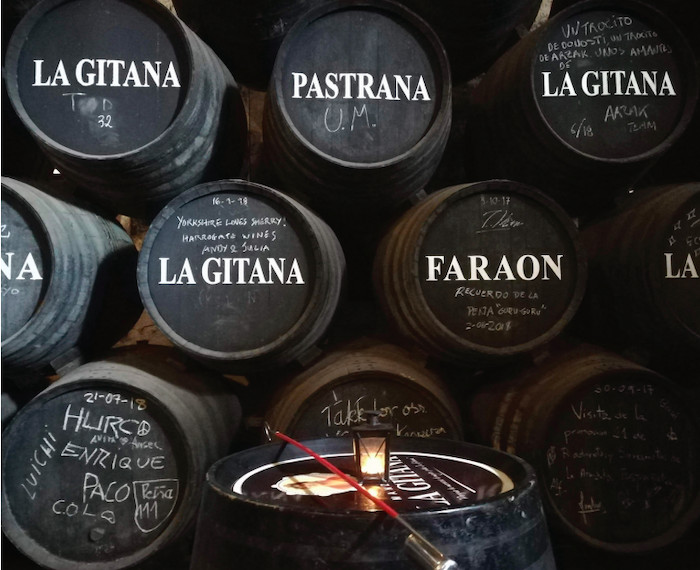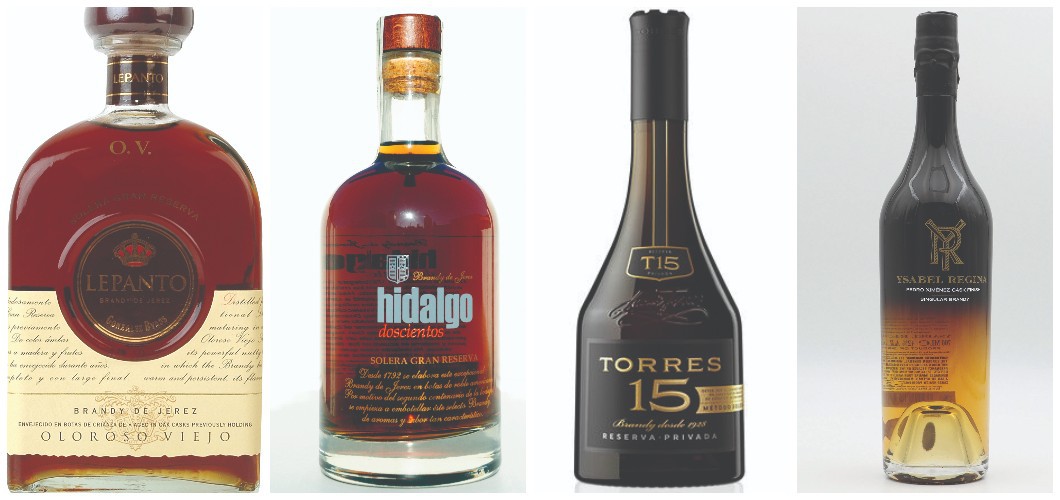
Laura Foster gets the lowdown on how brandy is made in the important Spanish regions of Penedès and Jerez.
Spanish Brandy
What is it?
The clue is in the name. It’s a brandy – or a spirit made from grapes – that comes from Spain. The vast majority of Spanish brandy hails from Jerez, with the next most important region being Penedès in Catalonia. Both Brandy de Jerez and Brandy del Penedès are protected denominations of origin. Beyond this there are further producers scattered around the country.
What of the grapes that are used? “Spain is [really dry and] dusty, it has some of the hardiest grapes that are going to be able to survive in these desert areas,” explains Abby Goodhall, regional manager & brand activation manager at Vantguard, which produces Ysabel Regina brandy. “Only a few brands use Palomino grapes that are grown in Jerez. The majority comes from La Mancha in central Spain, which produces the Arién grape.”
In Penedès, the varieties used to make cava – Macabeo, Xarel-lo and Parellada – are mostly used, along with some Ugni Blanc.
To distil the wine, alembic stills are used, often only for a single distillation, sometimes a double, resulting in a spirit called holandas with an abv between 40% and 70% abv. Column stills are also used to produce ‘aguardiente’ at a strength between 70% and 94% abv. The higher-quality Spanish brandy will traditionally use 100% holandas spirit, while a mix of holandas and aguardiente will be used for the younger, more aff ordable products.
Distillation for Brandy de Jerez is often conducted through contract distillation. “We have a partnership with our distillery that does the job for us,” says Fermin Hidalgo, director of Bodegas Hidalgo in Sanlúcar de Barrameda.
“I’m pretty sure there is not even one distillery in the sherry area, but there are sherry houses that own distilleries in other parts of Spain. I would love a distillery myself, but sherry brandy is not fashionable nowadays, so it’s not worth it.”
When it comes to ageing, those made in the sherry triangle are required to be matured in casks that previously held sherry, and for a solera system to be used for ageing. Due to the nature of solera ageing, the fi gures given are an average age rather than the minimum age in the system.
Brandy de Jerez has three different classifi cations, as Hidalgo explains to me: “Solera brandy, which is an entry level and has to be minimum aged for a year; Reserva Brandy de Jerez that has to be at least three years of age; then we have the Solera Gran Reserva, which has to be a minimum of five years.”
Outside of Jerez, some producers still choose to use solera ageing, while others use static cask ageing. “You can use new American oak for Spanish brandy, but you can also use French limousine – this comes from this sort of crossover with Penedès in Catalonia,” says Goodhall.
What’s out there?

Inside the Brandy de Jerez appellation, a number of bodegas have their own brands. Gonzalez Byass produces Lepanto and Soberano, with the former intended to be enjoyed neat, and the latter recommended to be drunk with a mixer or on the rocks.
Lepanto OV Solera Gran Reserva has spent an average of 12 years in ex-Tío Pepe fi no casks, and a further three years on average in Oloroso casks. It certainly displays that fi no character, with a silky palate that quickly becomes drying, with characters of flake almonds, sea salt, a distinct lees-y note, walnuts and cocoa powder all in the mix.
Bodega Hidalgo’s Doscientos is a Solera Gran Reserva that’s been aged 10 years in oloroso and cream sherry casks. It’s a big, voluptuous spirit with layers of complexity: flavours of dark cherry, orange zest and raspberry are overlaid with vanilla, allspice, 70% dark chocolate and boozy sultanas.
In Penedès, the biggest name is Torres. Its Torres 15 is aged in American oak barrels and intended for use in cocktails. The American oak influence is marked in notes of vanilla, toff ee and caramel, which are accompanied by bright lemon zest, dried fruits and a rum-like character.
Vantguard’s Ysabel Regina is a more modern take on Spanish brandy, blending Gran Solera Reserva Spanish brandy finished in PX casks with a small amount of VSOP cognac. The result is a beguiling, caramelised palate, with a lifted fl oral note mixing with notes of orange zest, burnt butter, dulce de leche, raisins and nutmeg.
In short, there’s a lot of variety out there thanks to the diff erent grape varieties, ageing methods and former contents of the casks.
How do you use it? “Traditionally in Spain you drink it in a Carajillo, which is their take on an Irish coffee – basically black coffee and brandy,” says Goodhall. “A lot of people debate this, but you can drink Brandy de Jerez with an ice cube and allow that to dilute.
The brandy nerds will tell you off though. The other thing is following the natural root of gastronomy in Spain, so drinking it on its own, but making sure that you’re pairing it with something good like cheese or chocolate and enjoying the match.”


